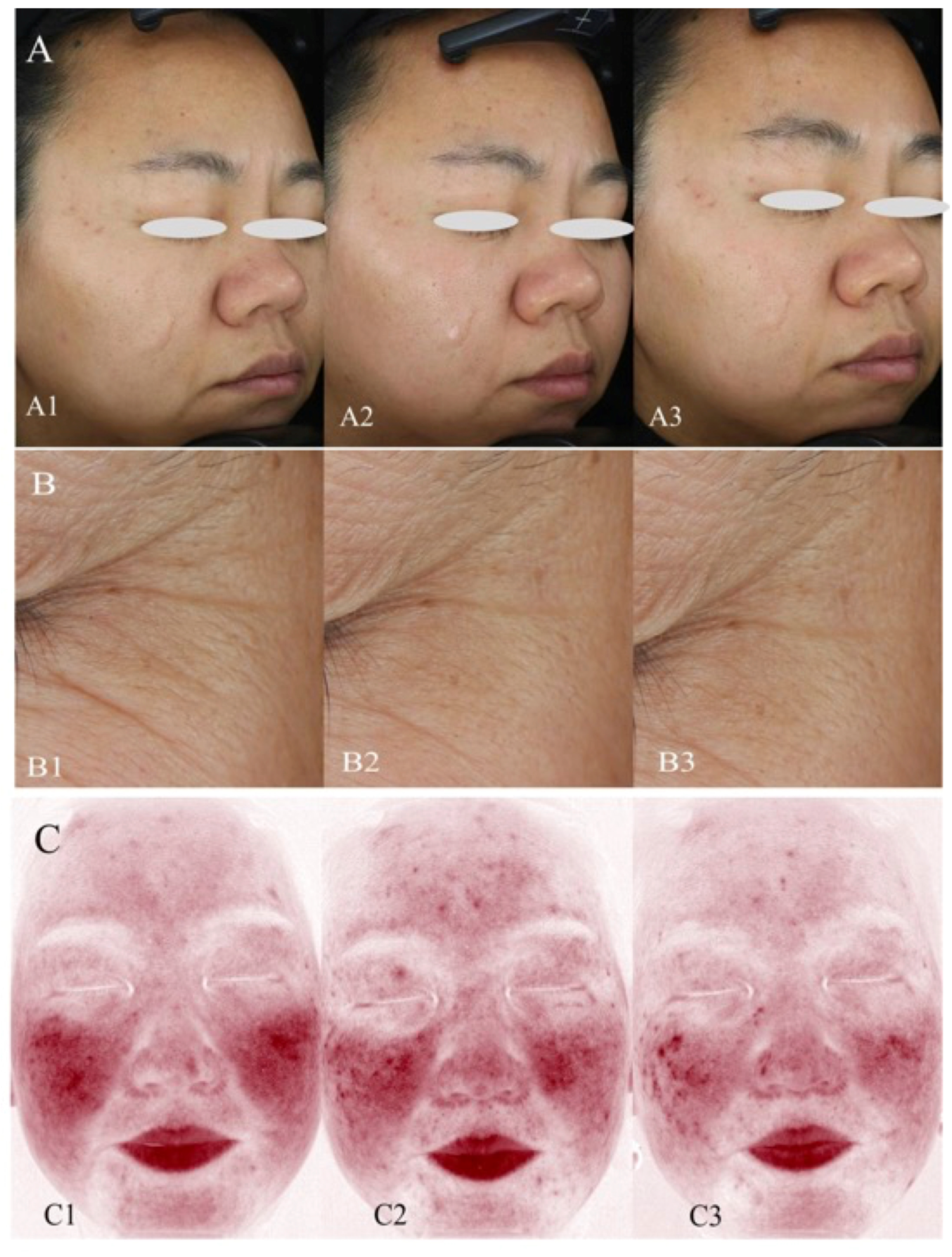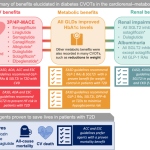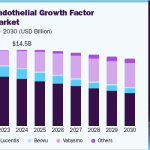
Natural Solutions to Combat Skin Photoaging: The Promise of Dendrobium Polysaccharides
The quest for youthful, resilient skin has always captivated both scientists and the public. In recent years, research into traditional remedies has revealed that certain herbal compounds may help reverse some of the twisted effects of aging due to sun exposure. One such compound is the polysaccharide extracted from Dendrobium officinale Kimura & Migo—commonly referred to as DOP. This natural ingredient appears to improve skin appearance by promoting angiogenesis, the formation of new blood vessels, which in turn supports skin structure and function. In this editorial, we take a closer look at how DOP works, examining its role in stimulating a key signaling pathway and potentially offering a new avenue in skin rejuvenation.
Understanding Photoaging and Its Impact on Skin Health
Photoaging results from long-term ultraviolet (UV) exposure and is often characterized by wrinkles, rough skin texture, loss of elasticity, and pigment irregularities. Although many of these changes are visible, the underlying alterations are more complicated. In particular, the blood vessels in sun-damaged skin undergo several confusing bits: they may shrink in diameter, display impaired permeability, and exhibit reduced capacity for angiogenesis. This poses a challenge in addressing the health of the skin holistically.
Challenges in Skin Rejuvenation and Angiogenesis
One of the tricky parts of treating photoaging is that its effects are not merely superficial. Along with alterations in collagen and elastic fibers, photoaging also involves tangled issues within the vascular system. The diminished ability to generate new blood vessels results in a weaker skin microenvironment, where insufficient oxygen and nutrient supply further aggravate aging signs. Addressing these complicated pieces by targeting angiogenesis represents a promising strategy in the pursuit of healthier skin.
The Role of Blood Vessel Formation in Skin Repair
Angiogenesis, which is the process by which new blood vessels form from existing ones, is essential for skin repair and regeneration. In photoaged skin, the limited formation of blood vessels is often accompanied by a reduction in collagen content and elasticity. By stimulating new vessel growth, therapies that enhance angiogenesis can potentially re-establish the supportive network needed for functional skin repair. As many studies have indicated, natural compounds like DOP seem to encourage the creation and repair of the vascular network, leading to improved skin structure and appearance.
Dendrobium Polysaccharide: A Natural Ally Against Photoaging
Derived from an ancient Chinese herbal remedy, Dendrobium officinale polysaccharide (DOP) has shown significant promise as an anti-photoaging agent. Traditional usages include treating gastrointestinal issues and supporting metabolic functions. Recent modern investigations, however, have brought to light its potential benefits on skin health, particularly its ability to promote blood vessel formation within damaged skin areas.
How DOP Promotes Angiogenesis: The Mechanism Explained
At the core of DOP’s potential benefits is its role in stimulating the kinase insert domain receptor (KDR) and activating the phosphatidylinositol 3-kinase (PI3K)-Aakt signaling pathway. This signaling pathway is a key regulator in endothelial cell function—cells that line the inside of blood vessels—and is essential for managing new vessel growth. When DOP is applied, experiments have shown that it enhances the expression of KDR, offering a boost to the entire pathway that leads to increased angiogenesis. This effect is crucial for repairing UV-damaged skin, as it not only helps restore blood flow but also improves the delivery of nutrients necessary for skin repair.
Deep Dive into the KDR/PI3K-Akt Signaling Pathway
Diving into the details, the KDR/PI3K-Akt signaling route is fundamental in controlling the growth, survival, and repair of endothelial cells. When vascular endothelial growth factor (VEGF) binds to its receptor KDR, it triggers this pathway, helping the cell to proliferate, migrate, and ultimately form new vascular networks. DOP appears to mimic or encourage these natural signals, even in an environment where UV radiation has reduced the cells’ ability to respond to growth factors. The vital role of this mechanism supports the view that promoting angiogenesis is a must-have strategy in counteracting the effects of photoaging.
Evidence from Laboratory and Animal Studies
A variety of experimental models have been used to assess the activity of DOP in skin repair. Both in vivo animal studies using mouse and guinea pig models, as well as in vitro studies with human endothelial cells, have demonstrated encouraging results—pointing to improved skin structure and enhanced blood vessel formation.
Animal Models: Bringing the Lab to Life
In animal studies, full-thickness skin wounds created on guinea pigs showed that local application of DOP led to faster wound healing and increased subcutaneous angiogenesis. Similarly, in mouse models designed to mimic photoaging caused by UV radiation, treatment with DOP improved skin elasticity and boosted dermal collagen content. These animal experiments indicate that DOP not only repairs the visible signs of aging but does so by enhancing the underlying blood vessel network.
Cell-Based Experiments: The Human Umbilical Vein Endothelial Cell Model
In vitro studies have used human umbilical vein endothelial cells (HUVECs) as a model to mimic human skin cells in the context of photoaging. When these cells were exposed to UVB radiation, a significant decrease in their tube-forming ability was noted. However, treatment with DOP revived the cells’ capacity to form capillary-like structures. Moreover, DOP reduced signs of cellular aging and enhanced the expression of markers associated with angiogenesis. These observations further support the hypothesis that DOP can play a crucial role in rejuvenating photoaged skin.
The Bigger Picture: Integrating Traditional Medicine with Modern Science
The intersection of ancient herbal remedies and modern scientific research is providing fascinating insights into skin rejuvenation. Beyond its application in treating gastrointestinal and metabolic conditions, DOP is emerging as a powerful agent for maintaining skin health. This represents a fine example of how traditional medicine can offer solutions to the twisted challenges posed by modern environmental damage.
Traditional Wisdom Meets Modern Research
For centuries, Chinese herbal medicine has been recognized for its beneficial effects on overall health, including skin well-being. Dendrobium officinale, in particular, is prized not only for its nutritional properties but also for its ability to support the body’s natural healing processes. Modern research has started to examine these traditional claims with scientific rigor, revealing that DOP can indeed help address the subtle parts of the aging process by promoting angiogenesis and counteracting the weakening of the skin’s vascular network.
Benefits of Combining Natural Compounds and Scientific Approaches
There are several reasons why integrating natural ingredients such as DOP into modern skincare may be beneficial:
- Enhanced Skin Repair: By promoting angiogenesis, DOP helps restore a healthy microenvironment in the skin, enabling better repair and regeneration.
- Improved Collagen Production: The increased blood flow provided by new vessel growth leads to greater delivery of nutrients, which in turn supports collagen synthesis.
- Reduced Signs of Aging: With the restoration of effective vascular networks, the skin can better cope with UV damage, reducing wrinkles and pigmentation irregularities.
- Support for Overall Health: As DOP is already used in traditional medicine for various ailments, its systemic benefits may also contribute to improved skin health.
Examining the Research Data and Experimental Findings
Many studies have used gene expression analysis and bioinformatics to understand the minute details of how UV-induced damage affects the skin. For instance, publicly available datasets comparing photoaged skin to photoprotected skin have shown that several key genes involved in angiogenesis are down-regulated in sun-exposed areas. This not only confirms that photoaging disrupts the formation of new blood vessels but also emphasizes the need to restore these fine details of skin repair.
Highlights from Bioinformatics Analyses
Bioinformatics studies have revealed that the expression of angiogenesis-related genes such as secreted frizzled-related protein 2 (SFRP2), tenomodulin (TNMD), and vasohibin 1 (VASH1) are altered in photoaged skin samples. The tangled issues in regulating blood vessel formation have been further emphasized by gene set enrichment analyses (GSEA), which indicate that the regulation of new vessel sprouting is significantly subdued in photo-damaged tissues.
The following table summarizes some key findings:
| Parameter | Observation in Photoaged Skin | Effect of DOP Treatment |
|---|---|---|
| Collagen Content | Reduced | Increased |
| Skin Elasticity | Deteriorated | Improved |
| Angiogenesis (Vessel Formation) | Impaired | Enhanced |
| Expression of KDR | Downregulated | Upregulated |
This structured summary underlines the multi-level impact of DOP—from molecular changes to tangible improvements in skin appearance. The data also suggest that employing DOP in treating photoaged skin might help reverse many of the twisted consequences of chronic UV exposure.
Key Considerations for the Future of Natural Skin Therapies
While the benefits of DOP are promising, there remain some intimidating challenges when it comes to incorporating such compounds into mainstream skincare treatments. Many of the current studies involve small sample sizes or are limited to laboratory settings. Therefore, further research with larger and more diverse populations is needed to firmly establish the safety and long-term efficacy of DOP for skin rejuvenation.
Addressing the Scary Parts of Integrating Natural Compounds
Some of the nerve-racking issues include potential variability in the purity of natural extracts and differences in individual responses to treatment. However, modern techniques in extraction and standardization can help figure a path towards consistent and safe products. With rigorous clinical trials and safety assessments, it is hoped that compounds like DOP can become a super important component in future anti-aging therapies.
Managing Patient Expectations and Scientific Realities
It is essential to bear in mind that while DOP and similar natural compounds show promise, they are not magic potions. The reflecting of improved skin health through angiogenesis is only one piece of the puzzle. Other factors such as lifestyle, sun protection, and overall health also play a critical role in the aging process. Working through these complex issues means that a multi-faceted approach is necessary for long-term success in anti-aging treatments.
Practical Implications for Skin Care and Future Research
Healthcare providers and beauty experts alike are increasingly interested in natural compounds that work on a cellular level. The research into DOP suggests that targeting the fine points of angiogenesis can be a viable strategy to counteract photoaging and restore youthful skin characteristics. Moreover, its potential to activate the KDR/PI3K-Akt pathway offers a fresh perspective on how to manage and treat not only photoaging but also other related skin conditions.
Integrating DOP into Skin Rejuvenation Regimens
The integration of DOP into skin care products could follow a well-thought-out strategy, combining both traditional wisdom and modern formulation science. Some pointers for clinicians and skincare formulators might include:
- Standardization: Ensuring that the DOP extract is of consistent quality and potency is essential.
- Topical Delivery: Studies suggest that local application—not systemic ingestion—promotes targeted improvements in skin structure.
- Combination Therapies: DOP may be most effective when used alongside other protective ingredients, such as antioxidants like vitamin E, which already have well-known benefits against UV damage.
- Patient Education: It is crucial to manage expectations and explain that while natural therapies can be effective, a comprehensive skincare routine and proper sun protection are key to fighting photoaging.
Future Research and Clinical Trials
For DOP to become a staple in anti-aging treatments, further large-scale research is necessary. Future studies should focus on:
- Expanding sample sizes in animal and human studies to validate promising findings.
- Investigating the optimal dosage and application methods to achieve the best outcomes without side effects.
- Comparing the effectiveness of DOP with other established treatments for photoaging to better position it within existing therapeutic frameworks.
- Exploring potential synergistic effects when combined with other natural or synthetic compounds that promote skin health.
What This Means for Consumers and Healthcare Practitioners
Consumers are increasingly looking for alternatives to harsh chemicals in their anti-aging regimens, and healthcare practitioners are tasked with guiding them through a market loaded with mixed messages. The research on DOP offers a refreshing perspective, underpinned by modern scientific methods and traditional practices.
Balancing Expectations with Evidence
For those interested in natural skincare, it is important to remember that while DOP shows promising results in enhancing angiogenesis, its effects should be viewed as part of a broader strategy for skin health. The slight differences in individual responses mean that what works perfectly for one person may need some adjustments for another. It is the subtle parts of each individual’s skin biology that must be taken into account when choosing a treatment plan.
Guidance for Practitioners
Healthcare professionals and dermatologists should consider the following key points when advising patients on incorporating natural therapies like DOP into their routines:
- Assessment of Skin Type and Damage: Before recommending any treatment, it is essential to analyze the specific challenges faced by each patient, such as the degree of collagen loss or vascular impairment.
- Combination with Established Therapies: Natural compounds may work best when combined with proven treatments such as retinoids, peptides, or antioxidants that have been shown to support skin repair.
- Monitoring and Adjustment: Since the response can be variable, it is important to monitor skin changes over time and adjust formulations or treatment plans accordingly.
Looking Ahead: A Future of Integrated Skin Care Therapies
The evolving research into natural compounds such as Dendrobium officinale polysaccharide is a fine example of how traditional remedies can be reimagined using modern scientific tools. With growing evidence that DOP enhances the KDR/PI3K-Akt signaling pathway, thereby spurring angiogenesis and skin rejuvenation, a future where natural and synthetic therapies work hand in hand seems not only possible but likely.
Addressing the Twists and Turns of Skin Aging
The challenges posed by UV-induced photoaging are full of problems that range from visible wrinkles to hidden issues in the skin’s vascular network. It is encouraging to see how modern research is starting to figure a path through these complications by identifying compounds that can repair and rebuild the skin’s structure from the inside out. The work on DOP highlights the potential for a more integrated and natural approach to skin repair—an approach that goes beyond surface treatments to address the nerve-racking, underlying changes within the skin.
Opportunities for Broader Applications
Furthermore, the ability of DOP to stimulate angiogenesis may have implications beyond the realm of cosmetic rejuvenation. Improved blood vessel formation can also play a role in wound healing, scar reduction, and even in metabolic regulation within the skin, offering a wide range of potential applications. By tapping into the super important processes driving skin regeneration, researchers are well on their way to developing therapies that could address multiple skin-related issues simultaneously.
Final Thoughts: Embracing a Multi-Faceted Approach to Skin Health
In conclusion, while the journey to overcoming photoaging is riddled with tangled issues and intimidating challenges, advancements in research offer promising solutions. Dendrobium officinale polysaccharide represents a natural, multi-faceted approach that addresses the vital aspects of skin health—not only by enhancing collagen content and skin elasticity but also by restoring the underlying vascular network through effective angiogenesis.
For consumers eager to explore natural alternatives, DOP provides a potential new option that is both rooted in tradition and supported by modern science. As further studies continue to unravel the fine details of its mechanism of action, integrating such compounds into everyday skincare regimens could become an essential part of our approach to fighting the effects of sun damage.
Key Takeaways for Future Care
- DOP has demonstrated a significant ability to promote angiogenesis, thus addressing the hidden complexities of photoaging.
- Activation of the KDR/PI3K-Akt signaling pathway is critical to improving endothelial cell function and skin repair after UV damage.
- Both in vivo and in vitro studies suggest that DOP can enhance skin elasticity, increase collagen synthesis, and ultimately improve the overall appearance of photoaged skin.
- There is a growing need for larger clinical studies to validate these initially promising results in diverse populations.
- By combining traditional herbal wisdom with modern research, new natural therapies like DOP could offer a balanced, integrative approach to skin rejuvenation.
Ultimately, tackling the overwhelming challenges of photoaging requires that we not only treat the visible effects but also the deeper, nerve-racking changes that occur at the cellular and vascular levels. The emergence of DOP as a potential skin rejuvenator exemplifies how we can use innovative biological insights to help steer through the maze of skin aging. As research continues and clinical evidence accumulates, natural compounds like DOP may soon join the toolbox of effective, science-backed skincare solutions, offering hope to those seeking to preserve youthful, healthy skin in an ever-changing world.
Looking to the Future
For now, consumers and professionals alike should keep an open mind about integrating natural compounds into a comprehensive skincare regimen. With ongoing advancements in the field, it is a thrilling time in dermatology and cosmetic science, as we learn to harness the fine points of traditional remedies through modern techniques. The journey might have its intimidating moments, but with a balanced approach that embraces both proven therapies and innovative natural compounds like DOP, the future of skin health looks both promising and full of potential.
Originally Post From https://www.nature.com/articles/s41598-025-15110-9
Read more about this topic at
Understanding angiogenesis during aging: opportunities …
Impaired angiogenesis in ageing: the central role of the …

